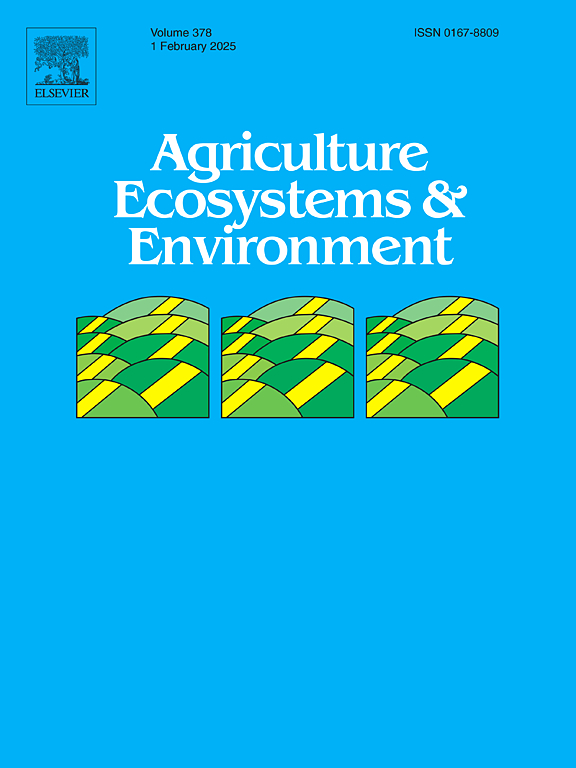The multifunctionality of cuttings from semi-natural habitats as organic amendments in arable farming
IF 6
1区 农林科学
Q1 AGRICULTURE, MULTIDISCIPLINARY
引用次数: 0
Abstract
Using cuttings from semi-natural habitats as organic amendment has the potential to enhance soil functioning of arable fields and improve biodiversity in eutrophicated road verges. Adoption of this management practice is currently constrained by lack of quantitative information on the involved benefits and risks. Processed (composted or fermented as Bokashi) and fresh road verge cuttings were experimentally applied during three years in a maize-winter wheat crop rotation on fifteen farm fields. Plots with organic amendments received half of the conventional fertilizer application compared to control plots with fertilizers at conventional application rates. Potential beneficial effects of organic amendments on soil organic matter (SOM) content, nutrient cycling, water retention and crop yield and possible risks related to nitrogen (N) leaching and the introduction of weeds, heavy metals and anthropogenic litter were investigated. Applying composted and fresh cuttings significantly increased SOM content in the upper soil layer, while composted cuttings enhanced SOM also in the entire cultivation layer (0–40 cm). Yields did not differ significantly from the control treatment despite the 50 % reduction in applied mineral fertilizer. Application of cuttings did not significantly increase N leaching, weed pressure or exceed heavy metal thresholds. However, significant contamination of the cuttings with anthropogenic litter was observed. This study shows that use of organic amendments from cuttings can significantly increase the SOM content and simultaneously reduce mineral fertilizer use. Provided litter contamination can be prevented or removed, the application of cuttings on arable fields produces important benefits to both farmers and society.
求助全文
约1分钟内获得全文
求助全文
来源期刊

Agriculture, Ecosystems & Environment
环境科学-环境科学
CiteScore
11.70
自引率
9.10%
发文量
392
审稿时长
26 days
期刊介绍:
Agriculture, Ecosystems and Environment publishes scientific articles dealing with the interface between agroecosystems and the natural environment, specifically how agriculture influences the environment and how changes in that environment impact agroecosystems. Preference is given to papers from experimental and observational research at the field, system or landscape level, from studies that enhance our understanding of processes using data-based biophysical modelling, and papers that bridge scientific disciplines and integrate knowledge. All papers should be placed in an international or wide comparative context.
 求助内容:
求助内容: 应助结果提醒方式:
应助结果提醒方式:


